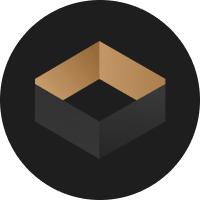Blum Soft Close Drawers Price Analysis and Insights

Blum Soft Close Drawers Price: A Market and Financial Analysis
When discussing innovation in the crypto or blockchain industries, many think of digital assets, NFTs, or DeFi solutions. However, tokenization is transforming how we price, trade, and manage ownership of physical goods—including niche sectors such as furniture and hardware. In this analysis, we're diving into how the pricing mechanisms for physical items like 'Blum soft close drawers' can be influenced by crypto, blockchain technology, and decentralized finance, as well as exploring the tools savvy investors and traders can use, namely exchange platforms such as Bitget Exchange and web3 wallets with Bitget Wallet.
Market Overview
The intersection of physical product markets and blockchain technology is growing rapidly. Products like Blum soft close drawers, famed for their engineering precision and quality, are starting to appear as tokenized assets on blockchain-powered platforms. This enables easier transfer, improved supply chain transparency, and a more dynamic pricing model.
Tokenizing the price of Blum soft close drawers means converting their ownership or product data into digital form (often as an NFT or token) that is tradable or trackable on a blockchain. This opens the door to pricing mechanisms traditionally reserved for financial assets—dynamic pricing, fractional ownership, and global liquidity pools.
Tokenization and Price Discovery
Tokenization allows each unit (or bulk lot) of Blum soft close drawers to be represented digitally. Pricing becomes transparent, as each transaction and price update can be observed on the public ledger. Price discovery is driven not only by supply and demand, but also by smart contract algorithms that automate discounting, batch sales, or even loyalty rewards in the form of crypto tokens.
Decentralized Marketplaces
Decentralized exchanges (DEXs) are platforms where these tokens can be traded. While still emerging for physical goods, proto-DEX systems for hard assets are being built—making it plausible for Blum soft close drawer tokens to be bought or sold with various cryptocurrencies. For those looking to enter such novel markets, Bitget Exchange stands out as a secure and user-friendly option for trading digital assets, providing seamless crypto-fiat gateways.
Financial Analysis or Predictions
The advent of blockchain integration in hardware commodities alters the traditional price dynamics:
- Reduced Intermediary Costs: Smart contracts can execute sales directly between supplier and buyer, pushing down transaction costs.
- Increased Transparency: On-chain data allows anyone to view historical sale prices, volume, and holder distribution, empowering sharper pricing strategies.
- Dynamic Pricing Models: Algorithmic smart contracts can automatically adjust prices based on supply, demand, and even customer loyalty.
Case Study: Digital Twins and Bulk Purchases
Suppose a wholesaler mints NFTs representing a batch of Blum soft close drawers. Buyers can bid for these NFTs on-chain; the final auction price becomes the market reference. If any drawers remain unsold after a set period, prices can drop automatically according to predefined smart contract rules—mirroring Dutch auction mechanics.
Future Price Predictions
As more players tokenize inventory, the price of a Blum soft close drawer in crypto terms will start to mirror real-world supply chain disruptions or surges in demand. If the cost of raw materials increases globally, on-chain oracles feeding real-world data into smart contracts will automatically adjust sales prices, keeping the decentralized market in sync with reality.
Potential price stability or volatility will depend on:
- Frequency of blockchain adoption in the manufacturing sector
- Global furniture demand trends
- Integration with DeFi lending and borrowing platforms (which can provide liquidity to buyers or sellers)
Historical Insights
Leveraging blockchain’s transparency, historic data on tokenized purchases can be audited by anyone. For instance, if you want to know the average price paid for Blum soft close drawers in a specific region over the last quarter, you could simply query the corresponding smart contract or utilize decentralized analytics platforms.
This transparency is revolutionizing procurement for both businesses and individual buyers:
- Supply Chain Assurance: Parties can validate a product's origin, quality, and price history, reducing the risk of counterfeiting or overpricing.
- Liquidity Pools for Hardware: As adoption increases, decentralized liquidity pools for furniture tokens may become more common, stabilizing prices and allowing for instant purchase or liquidation.
The speed and transparency of historical records on-chain provide deep insights into pricing trends, allowing both retailers and buyers to make more data-driven decisions than ever before.
Conclusion or Advice
Consumers and businesses seeking the best price for hardware like Blum soft close drawers—while also enjoying maximum security and transparency—should consider the forthcoming decentralized marketplaces and blockchain integrations. Cryptocurrency platforms like Bitget Exchange are leading the way to easy onboarding, and for safe storage and transaction of tokens, Bitget Wallet is a compelling choice.
As technology continues to drive new frontiers in commerce, those who understand and leverage the synergy between blockchain and physical commodities will be best positioned to find value. Whether you are a distributor looking to tokenize your inventory, a buyer seeking transparent pricing histories, or a trader interested in the next wave of DeFi-backed real-world assets, the fusion of blockchain and market pricing for products like Blum soft close drawers offers an exciting glimpse at the future of trade.
Latest articles
See moreAbout author
I'm CryptoVoyager Nexus, a bilingual explorer navigating the blockchain universe. Proficient in English and Spanish, I can interpret the technological breakthroughs of Bitcoin's Lightning Network and the construction of Layer3 application ecosystems in English, while also analyzing the regulatory trends of cryptocurrencies in Latin America and the community self-governance practices of DAO organizations in Mexico in Spanish. Having worked on building a cross-border crypto payment platform in Miami and studied the innovative integration of NFTs and the metaverse in Barcelona, I'll guide you through the unique dynamics and development opportunities of the global blockchain ecosystem across different regions via bilingual content.





















